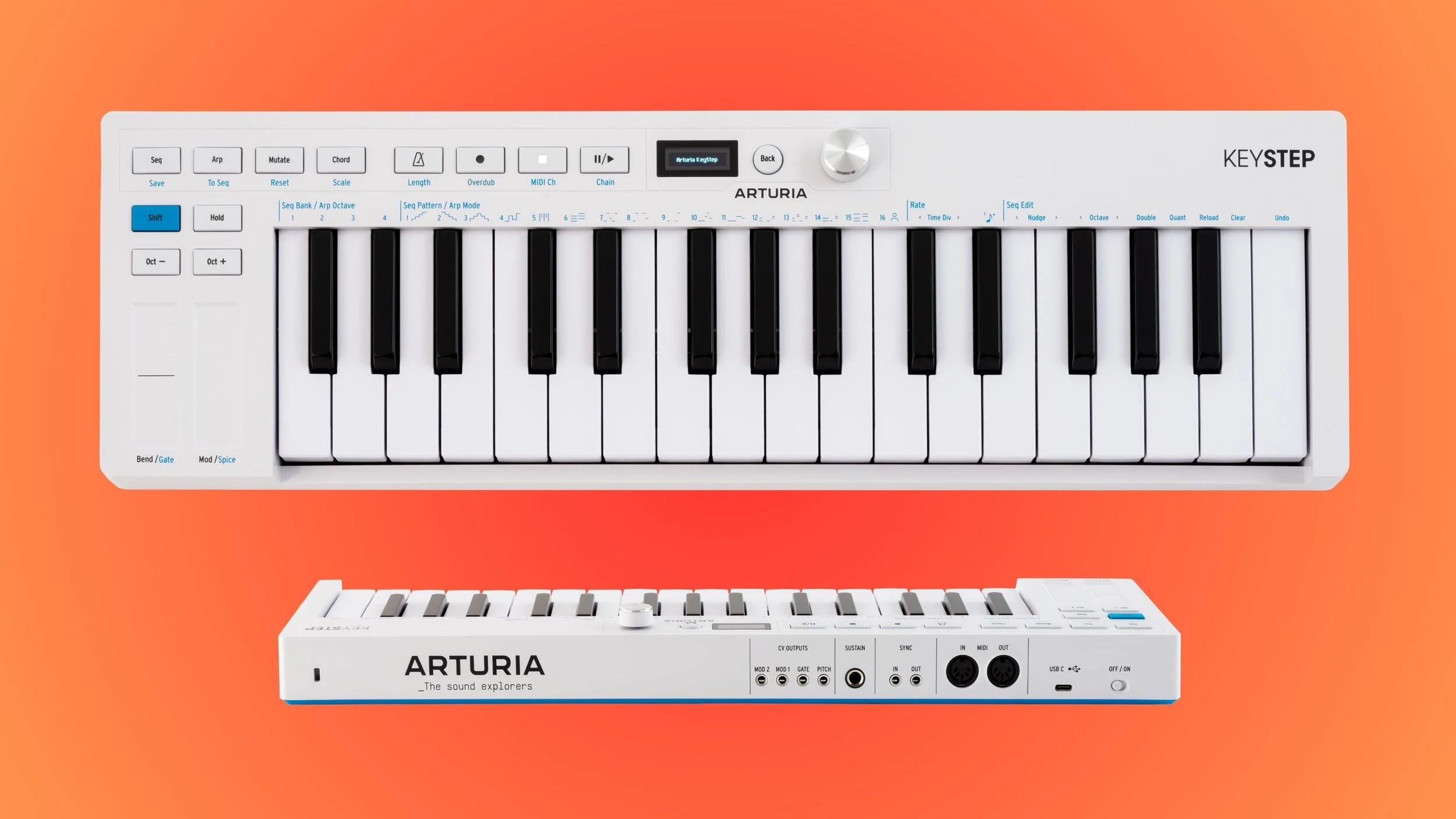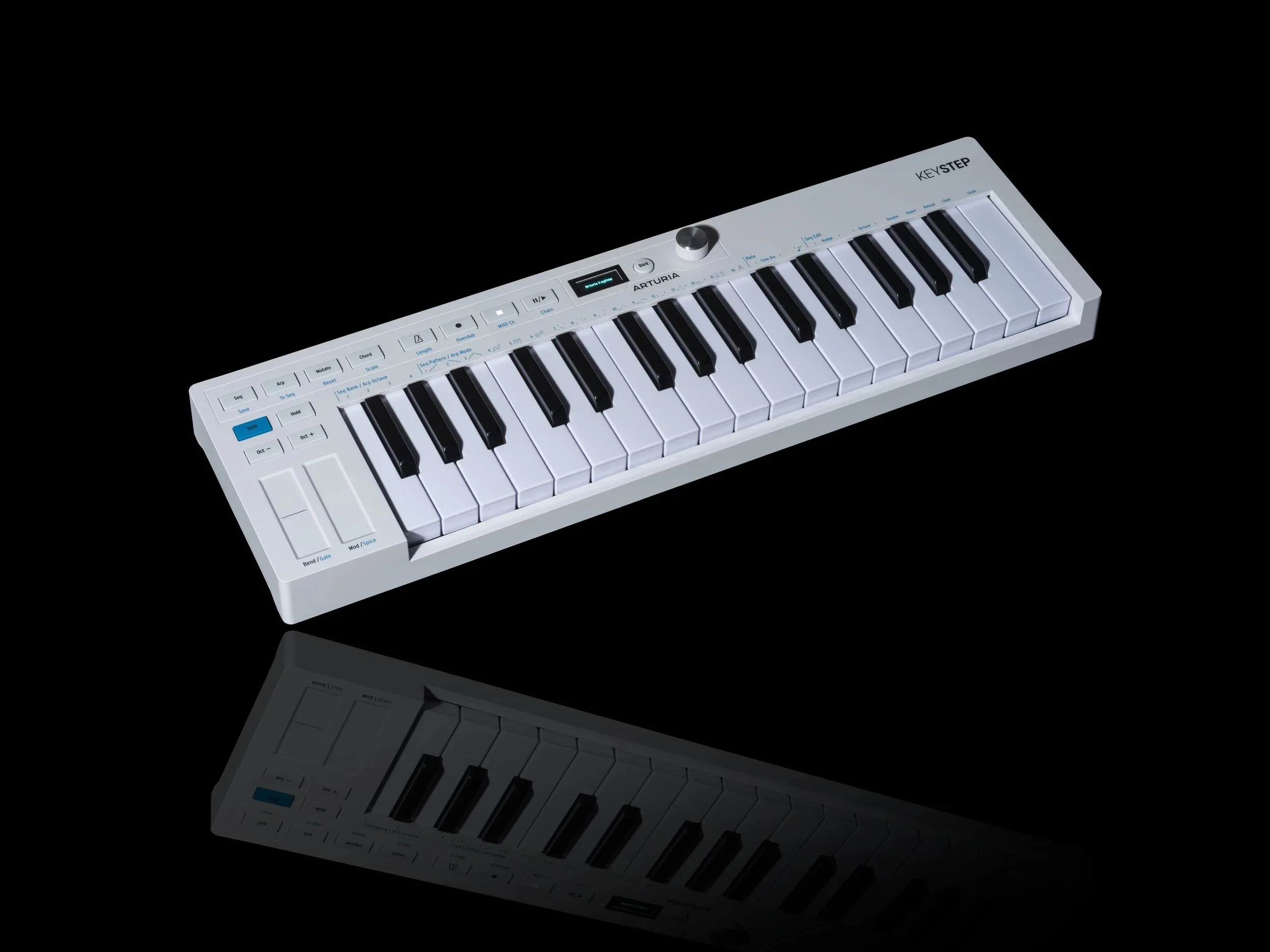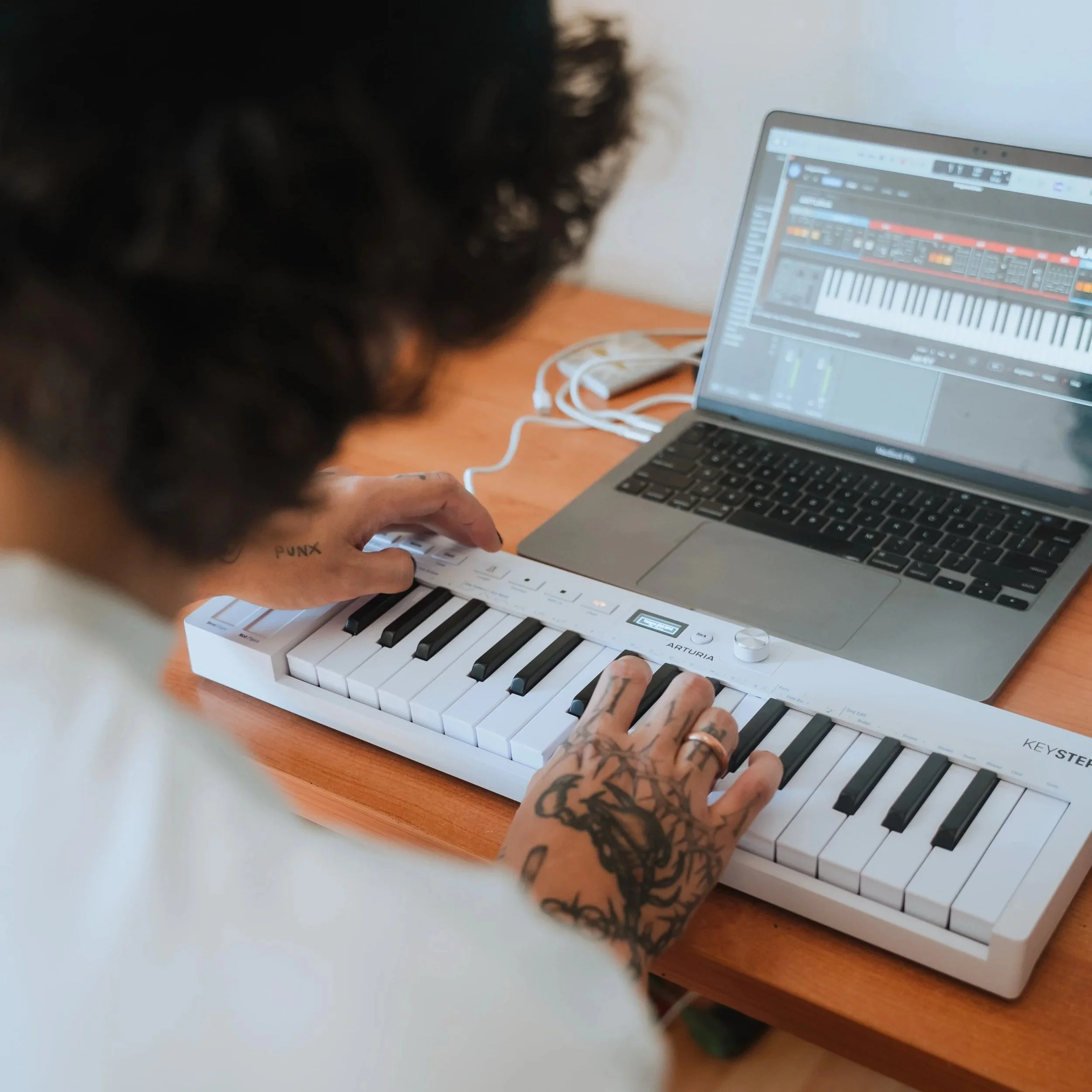Arturia KeyStep Mk2: Is It Worth The Upgrade?

Arturia didn’t just update the KeyStep — they evolved one of the most beloved compact controllers in modern electronic music. The original KeyStep became a studio essential for producers who wanted tight sequencing, CV connectivity, and hands-on creative control in a footprint that didn’t take over a desk or backpack. With the KeyStep Mk2, Arturia is doubling down on what made it special while quietly adding the kind of power and polish that makes this feel like a true generational step forward: an OLED screen, deeper sequencing tools, expanded connectivity, and new generative tricks designed to spark ideas fast. If you’ve spent time around synths, modular rigs, or hardware-leaning DAW setups, the KeyStep ecosystem has probably touched your world somehow — whether it was the original compact KeyStep, the beefier KeyStep Pro, or the MicroFreak and MiniFreak which borrowed that same playful sequencing DNA. The Mk2 sits right in the middle of that family tree: more advanced and expressive than the original KeyStep, but still streamlined and portable compared to the Pro. It’s a smarter, more mature version of a modern classic — still instantly familiar, but with enough new depth to pull you deeper into performance and pattern creation.
Need a hardware-friendly MIDI keyboard for your setup? Click here to check the current KeyStep Mk2 deals
Disclosure: This site contains affiliate links. If you book or purchase through these links, I may earn a commission at no extra cost to you. This helps support the site and keeps my content free. As an Amazon Associate, I earn from qualifying purchases.
What’s New in the KeyStep Mk2
The original KeyStep already earned cult status — compact footprint, real musical feel, and just enough sequencing power to glue a hybrid setup together. The KeyStep Mk2 doesn’t reinvent that formula; it deepens it. An OLED display now anchors the interface, giving you real feedback on patterns, tempo, and parameters without needing to count button presses or guess where you are. The endless encoder next to it makes dialing through menus and values feel smooth in a way the original never could. These are subtle additions on paper that make a huge difference in real-world flow.
Then there’s the generative side. Arturia added Mutate, Spice, and pattern evolution functions borrowed from their Freak synths, so you can start simple and then nudge your loops into new territory. Un-quantized recording opens the door to more human groove ideas — a big one for people who don’t want to be locked to rigid grids. Connectivity also expands meaningfully: USB-C, refreshed MIDI I/O, full CV/Gate outs, Sync I/O, and a proper power switch. It stays tiny, but it feels grown-up.
Features & Workflow
The KeyStep Mk2 keeps its 32-key Slimkey layout — still velocity-sensitive with aftertouch, still surprisingly expressive for its size. You get hands-on pitch and mod strips, transport controls, and an interface designed to be played, not programmed. The polyphonic step sequencer remains the heart of it all: up to multiple voices per step, multiple patterns, easy pattern chaining, and those generative variations make it simple to go from precise to chaotic in a musical way.
As both a keyboard controller and a brain for hardware rigs, it nails that hybrid mission. Use it to control soft synths in Ableton one minute, then send pitch/gate to a Eurorack voice or desktop analog synth the next. Sync it to drum machines, clock modular systems, or just run it standalone in a small desktop rig. The workflow philosophy hasn’t changed — direct, musical, performance-friendly — but the Mk2 gives you more places to take ideas once they start rolling.
Real-World Creative Flow
What makes the KeyStep line special isn’t just its feature list. It’s the way it invites improvisation. You don’t get lost in deep menus or complicated menus-within-menus; you jam. The Mk2 leans into that further. Mutate and Spice behave less like technical tools and more like playful forces nudging your loop forward. It’s easy to dial in micro-variations, accidental magic, and evolving patterns that feel alive. Think “modular-adjacent spontaneity,” but portable and well-behaved.
The un-quantized recording feels underrated at first — then suddenly you’re tapping in loose basslines and chords that sit in a pocket you’d probably never program by hand. It gives you permission to make imperfect loops, which is liberating in a world obsessed with quantized perfection. Paired with the OLED feedback and smoother navigation, the Mk2 is less “companion keyboard” and more “creative instrument disguised as a utility device.”
Where It Fits in Arturia’s Lineup (and Who It’s For)
Arturia’s sequencing ecosystem has quietly become one of the most interesting families in modern electronic music. You’ve got the BeatStep and BeatStep Pro holding down pad-centric sequencing and CV control for drum machines and modular rigs. The original KeyStep became the go-to compact keyboard-sequencer for synth heads everywhere, while the KeyStep Pro stepped in as a full performance brain for multi-instrument setups. Even the MicroFreak and MiniFreak inherited that same playful sequencing DNA, blurring the line between synth and performance tool.
The KeyStep Mk2 slots neatly in the middle of all this. It doesn’t try to replace the OG KeyStep or compete with the Pro’s “command station” vibe. Instead, it refines the compact-keyboard-sequencer idea with modern touches — an OLED screen, smoother navigation, deeper sequencing tools, and generative features that bring some of the Freak-series magic into the KeyStep format. It’s the “I want power, but I still want a small footprint” controller Arturia didn’t have until now.
If you mostly work with a few synths and modular voices, the Mk2 is the sweet spot — more capable and expressive than the original KeyStep, but without the size and complexity overhead of the Pro. If you stay in the DAW most of the time, it still makes sense, especially if you like hands-on jamming, loose timing, and getting ideas flowing fast instead of programming everything with a mouse.
Beginners will grow into it. Experienced producers won’t hit walls with it. And above all, it’s proof that not every sequencer needs to turn into a spaceship — sometimes the best move is making a great tool sharper, more fluid, and more musical.
Alternatives to Consider
The market for hardware sequencers is broader than ever, and each option brings its own personality. If you want deep, multi-track sequencing with heavyweight routing and performance tools, machines like the Korg SQ-64 and Pioneer Toraiz Squid lean toward modular-forward and live-hardware setups, respectively. On the more experimental end, the Torso T-1 has carved out a cult following for its algorithmic and generative sequencing approach — perfect for artists who prefer patterns that evolve rather than repeat. And then there are hybrid groovebox-style sequencers like the Novation Circuit Tracks, where sequencing and sound engine live side-by-side for fast, self-contained idea sketching.
What makes the KeyStep Mk2 stand out isn’t raw sequencing depth — it’s the blend of playable keyboard, hands-on sequencing, and idea-shaping tools in a footprint small enough to live on any desk or backpack rig. It doesn’t try to be a Pyramid-level command station or a groovebox that replaces your synths. Instead, it fits into the middle ground: for producers who want real musical feel, hardware-ready connectivity, and creative sequencing without giving up immediacy. If your priority is expressive input and spontaneous looping rather than menu-driven complexity, the KeyStep Mk2 occupies a space few others touch.
Pros & Cons
Pros
OLED display finally gives visual clarity
Mutate/Spice generative tools spark real ideas
Great balance of size, power, and immediacy
USB-C, full CV/Gate, MIDI, and sync make it rig-ready
Still one of the most musical feeling mini-keybeds
Cons
Still a 32-key slim layout — not ideal for two-hand players
No full-blown DAW control modes like some MIDI keyboards
KeyStep Pro users won’t feel a strong reason to “downgrade”
Power users may want deeper pattern editing on-device
Verdict
The original KeyStep didn’t become a modern classic by accident — it made hybrid hardware setups feel accessible, musical, and compact. The Mk2 builds on that charm instead of replacing it, adding just enough display feedback, sequencing depth, and generative playfulness to feel like it pushes the design forward without ruining its simplicity. It’s still a KeyStep at heart — quick to use, easy to slot into any setup, fun to improvise with — just smarter and more future-proof.
If you’re building a hardware-leaning workflow in 2025 and you don’t need the full KeyStep Pro footprint, this is probably the best portable brain you can buy. It’s equally compelling for DAW-first producers who want hands-on ideas and imperfect grooves, and for modular folks who appreciate thoughtful CV design. The Mk2 isn’t a flashy upgrade; it's a more confident one — and that makes it the version to buy unless you’re hunting for the lowest budget option.
Ready to level up from the original KeyStep?
Click here to check current deals
Disclosure: This site contains affiliate links. If you book or purchase through these links, I may earn a commission at no extra cost to you. This helps support the site and keeps my content free. As an Amazon Associate, I earn from qualifying purchases.



